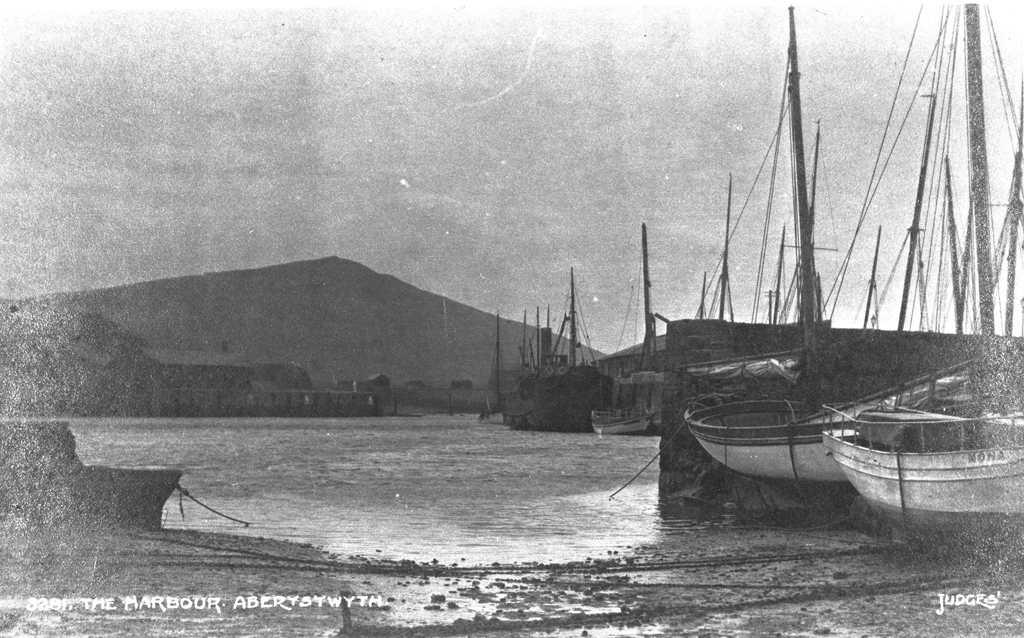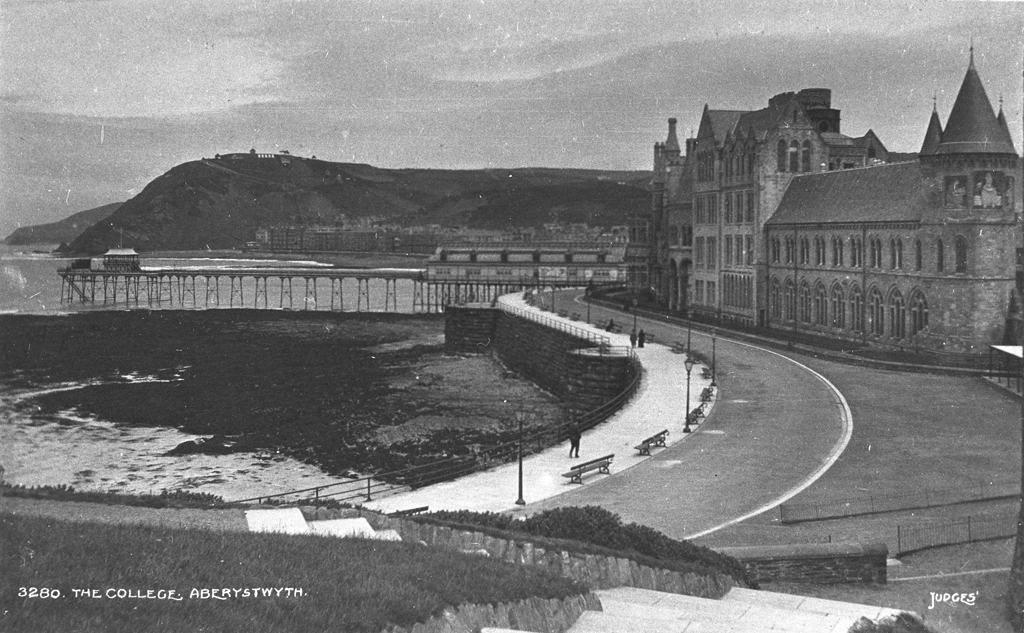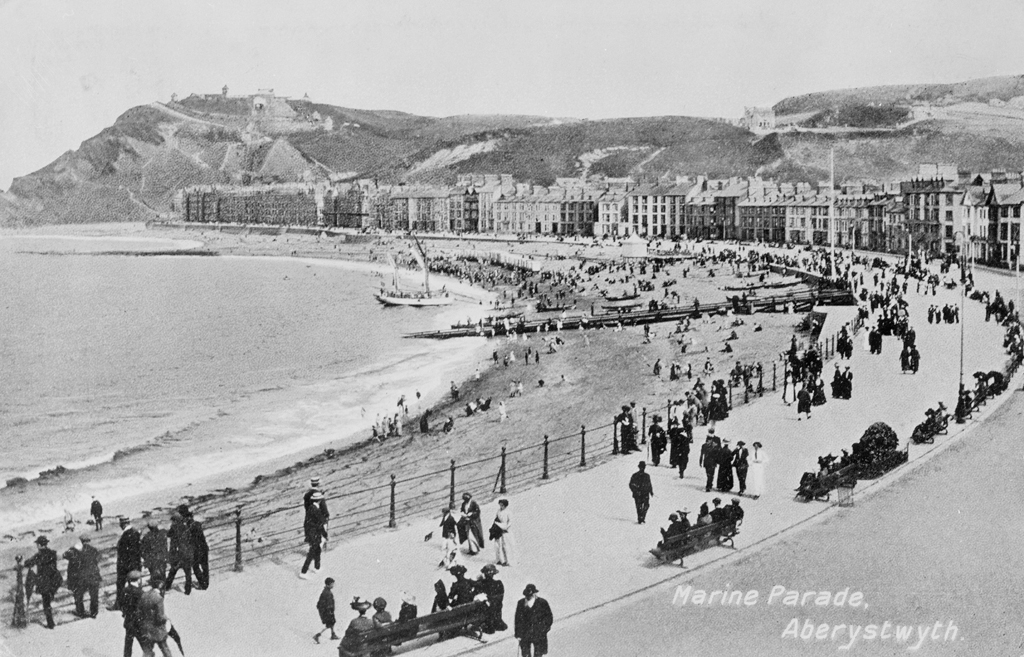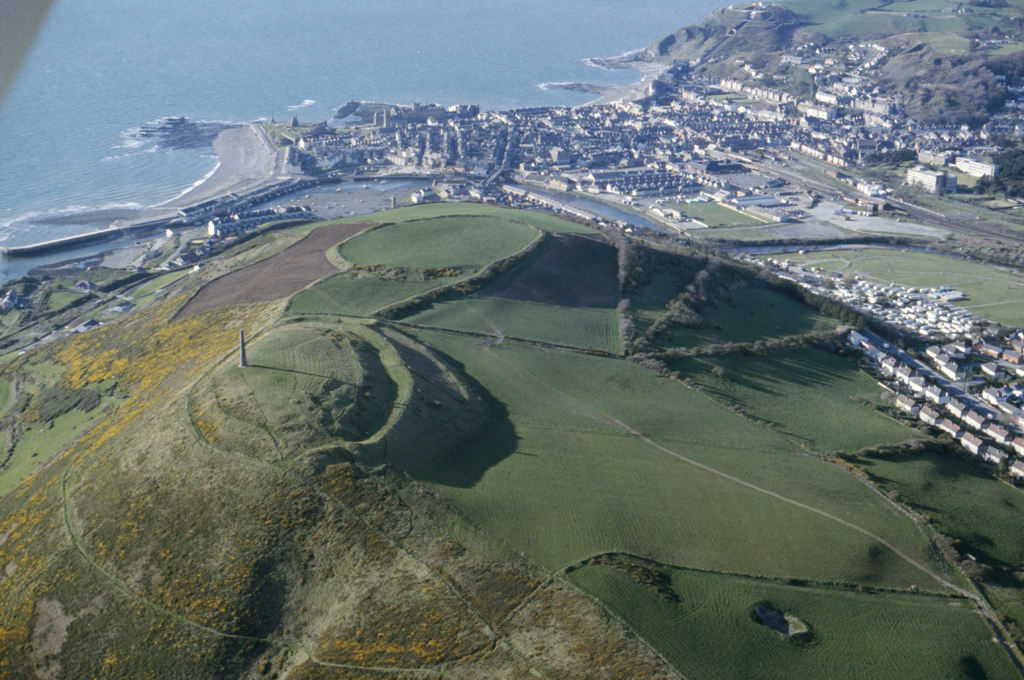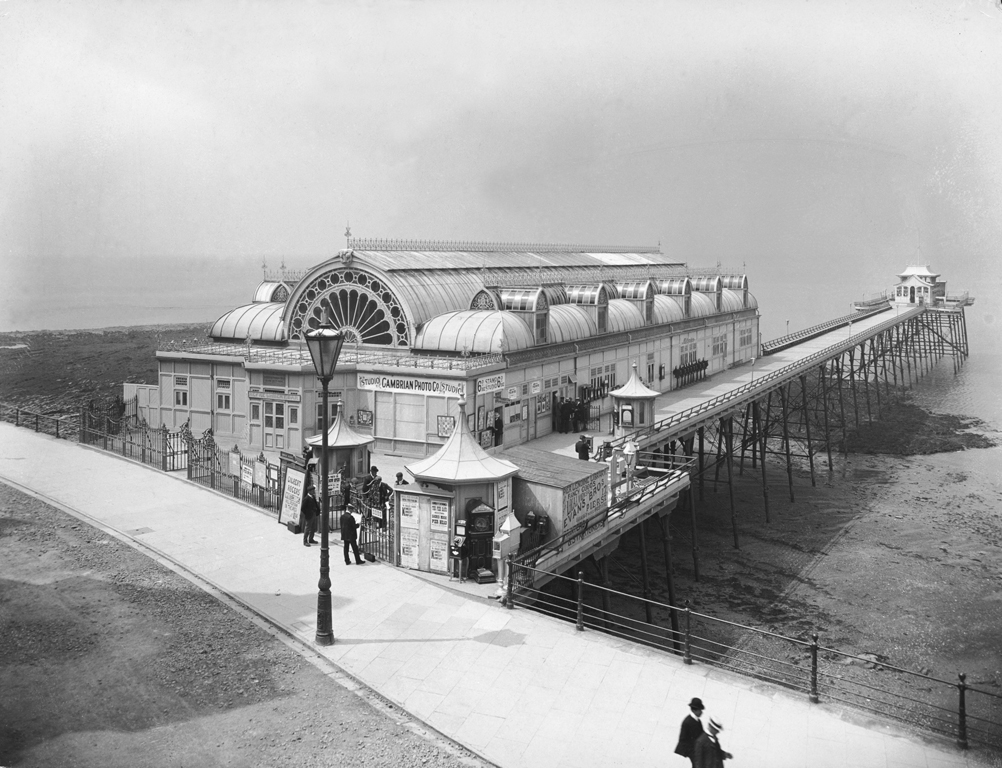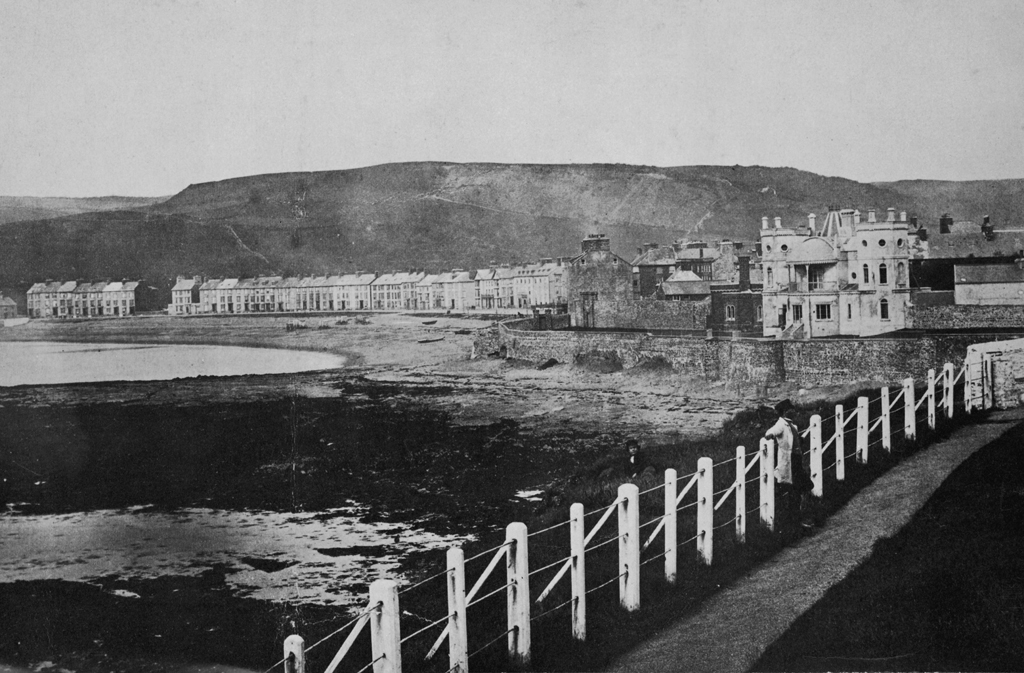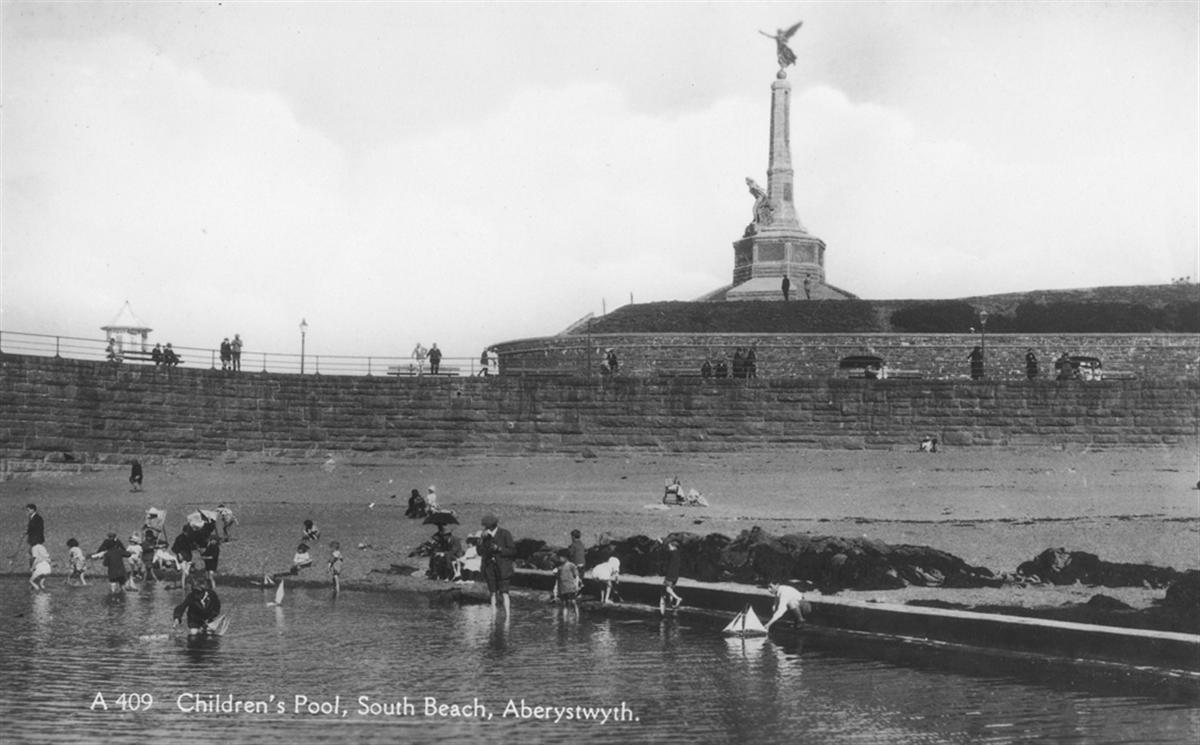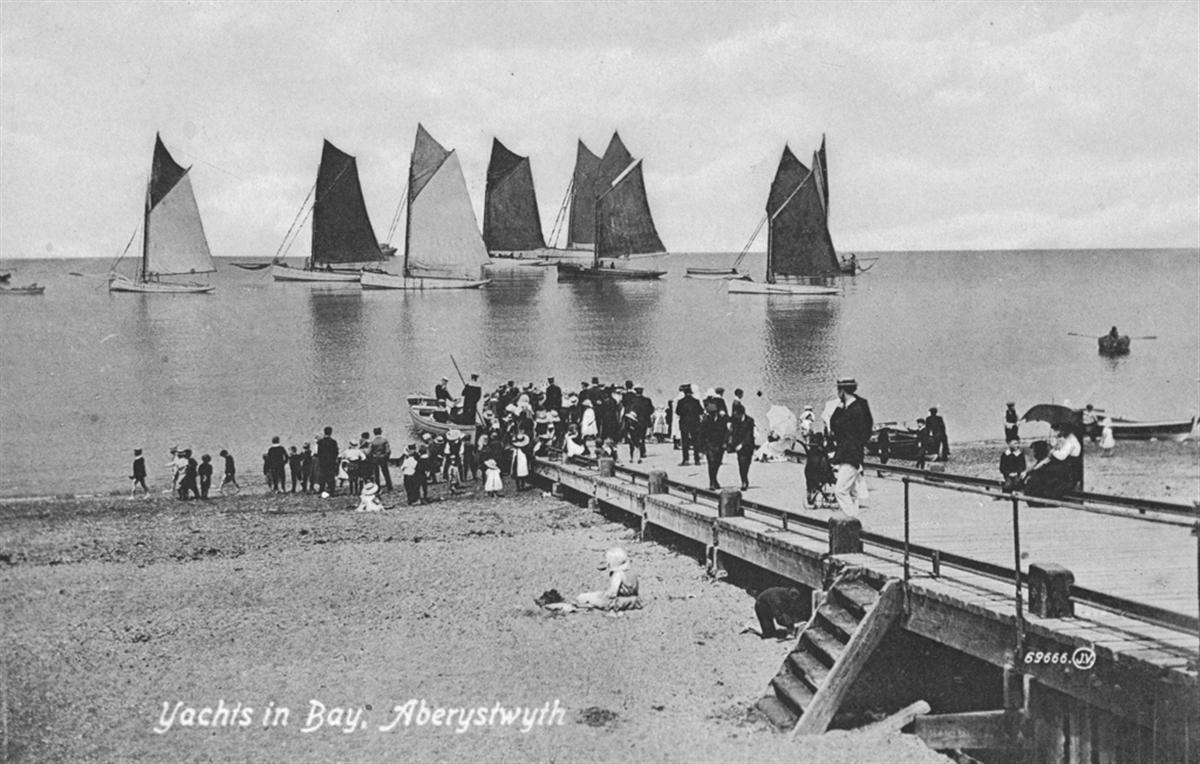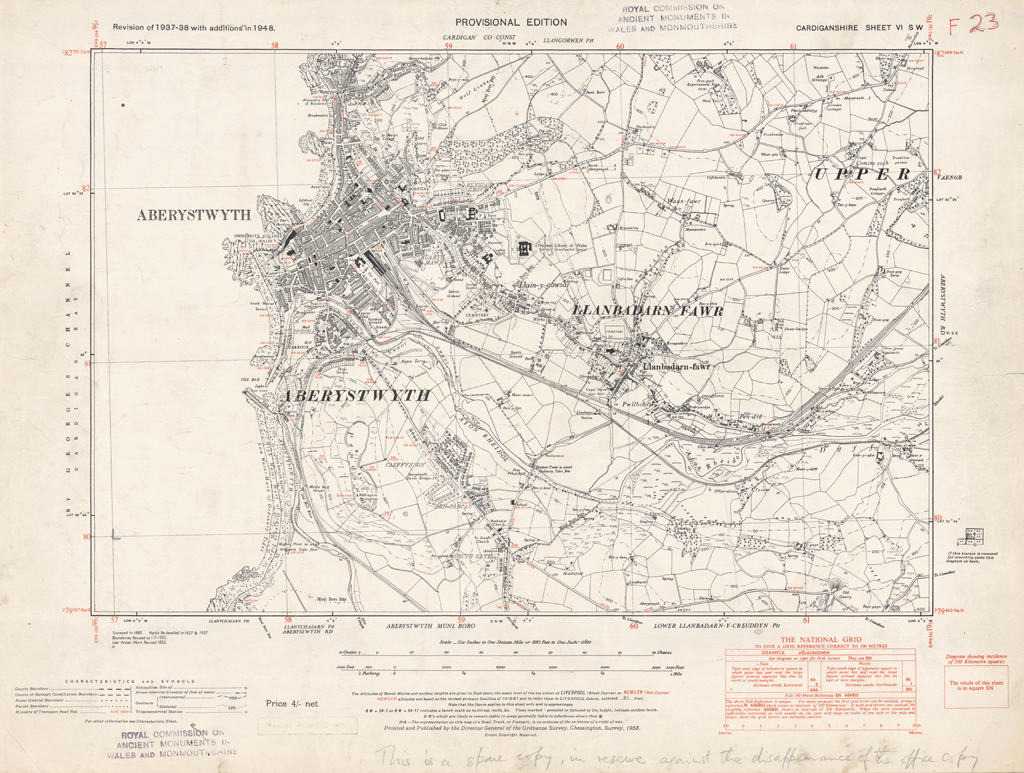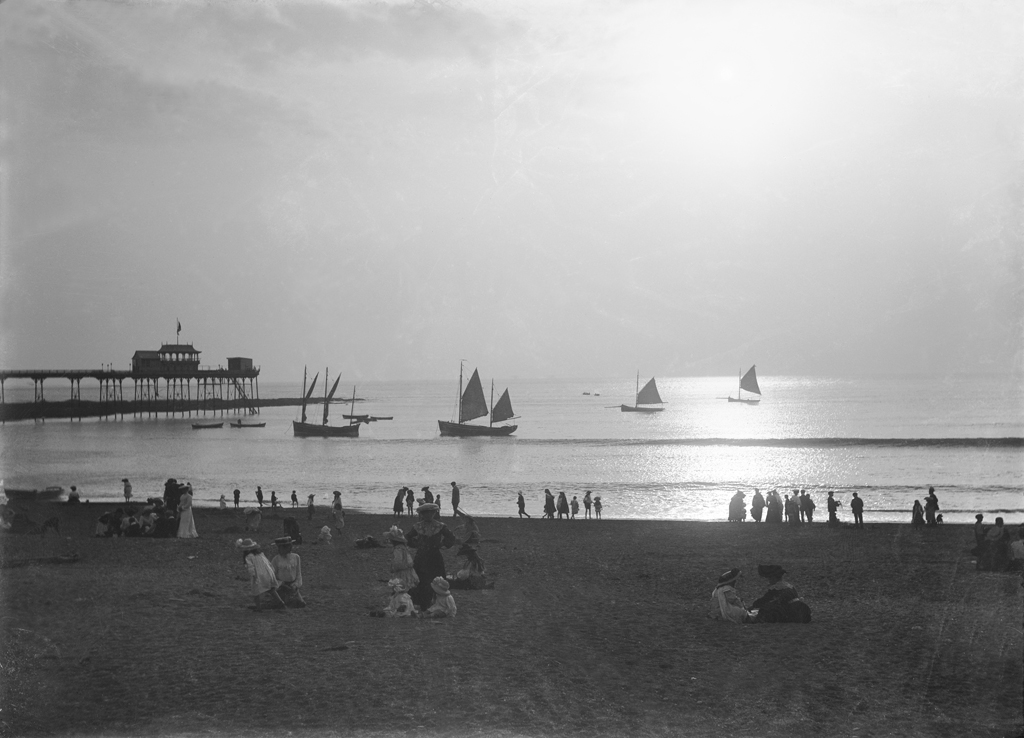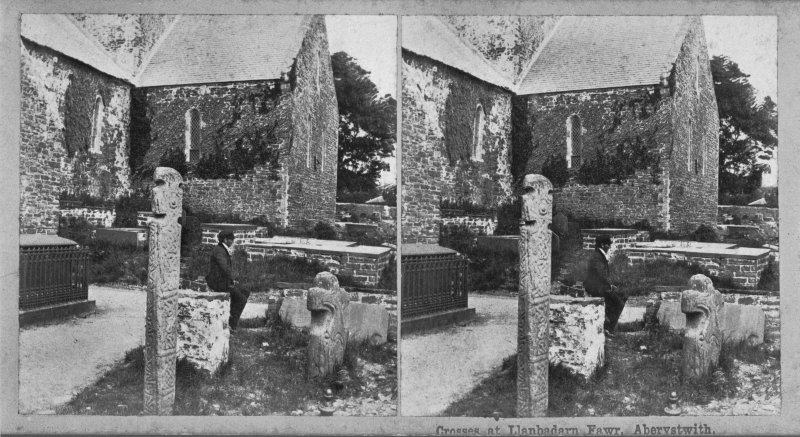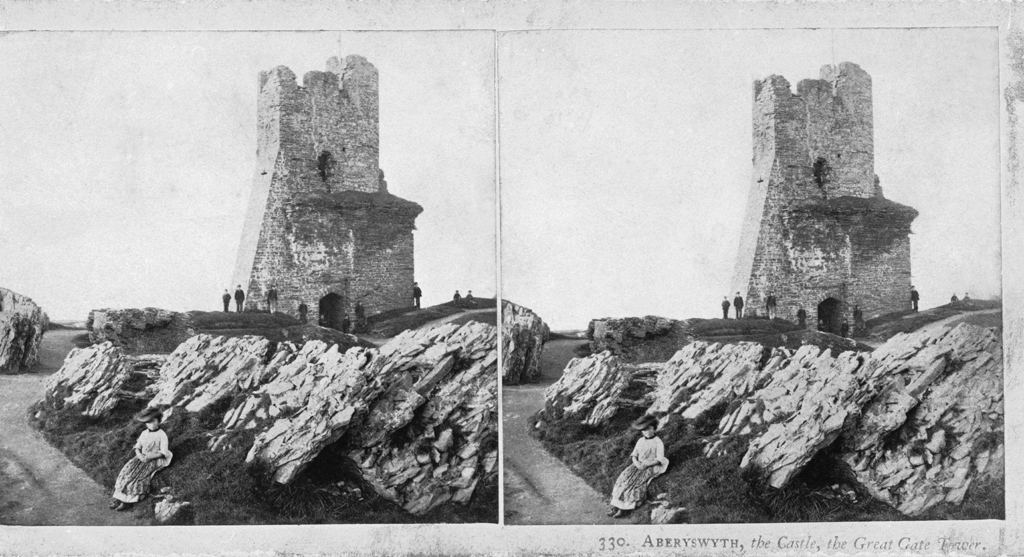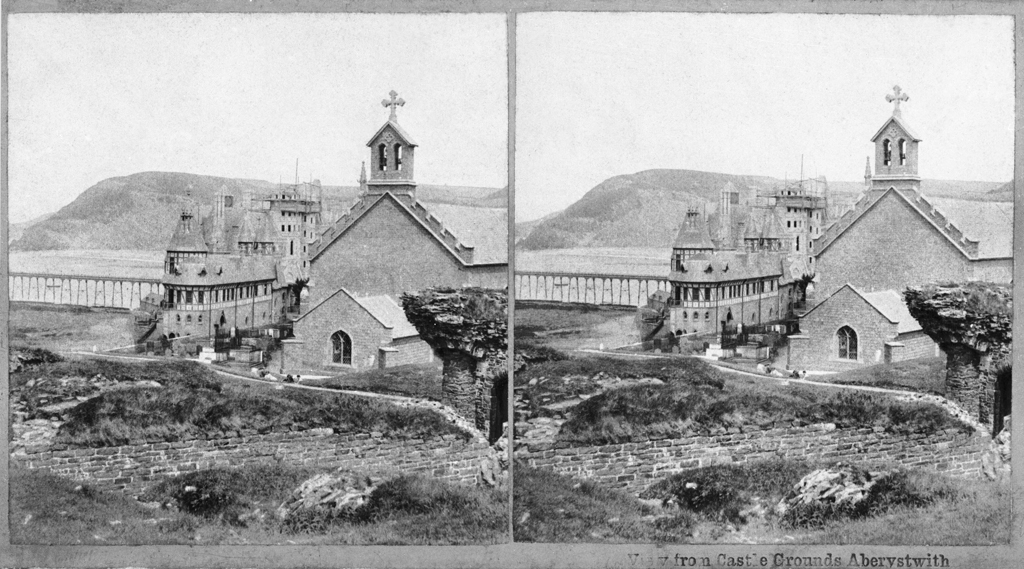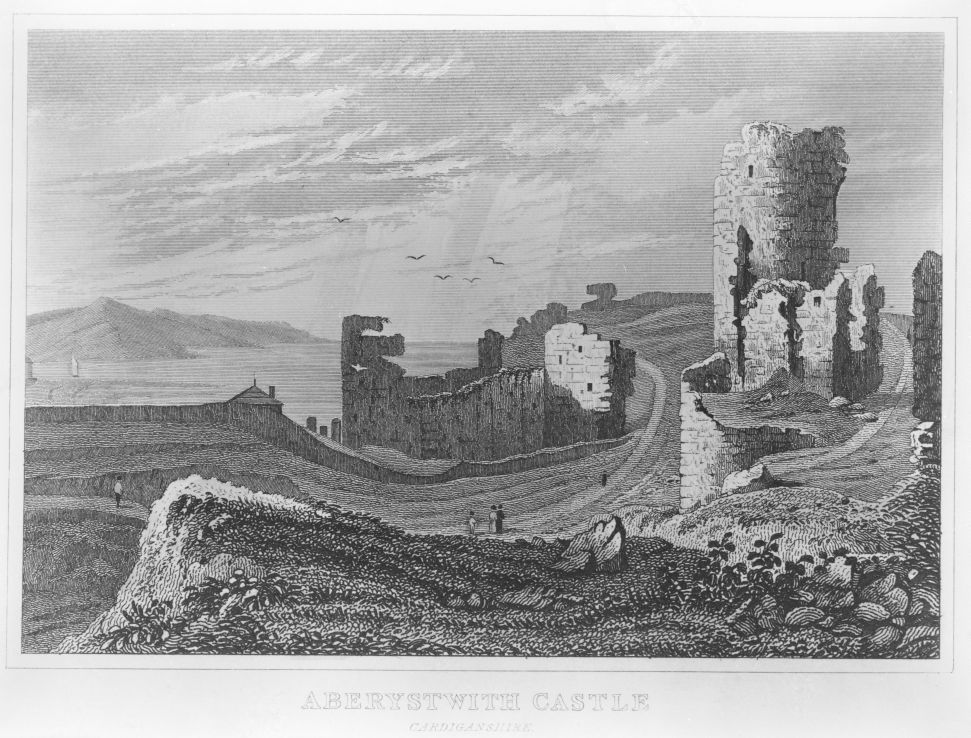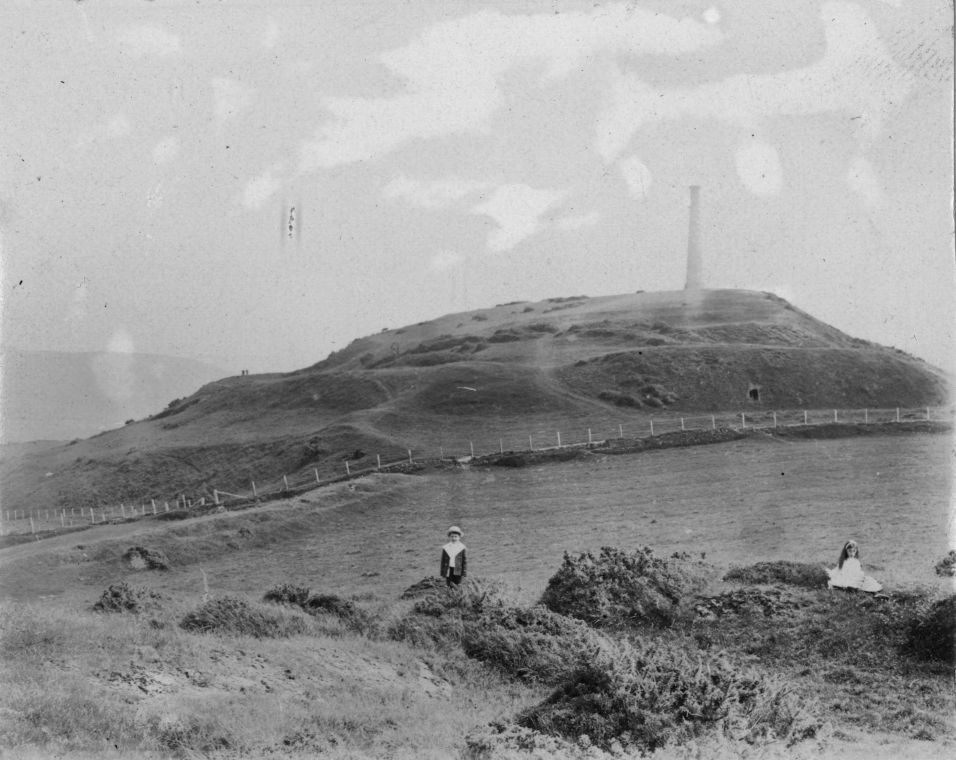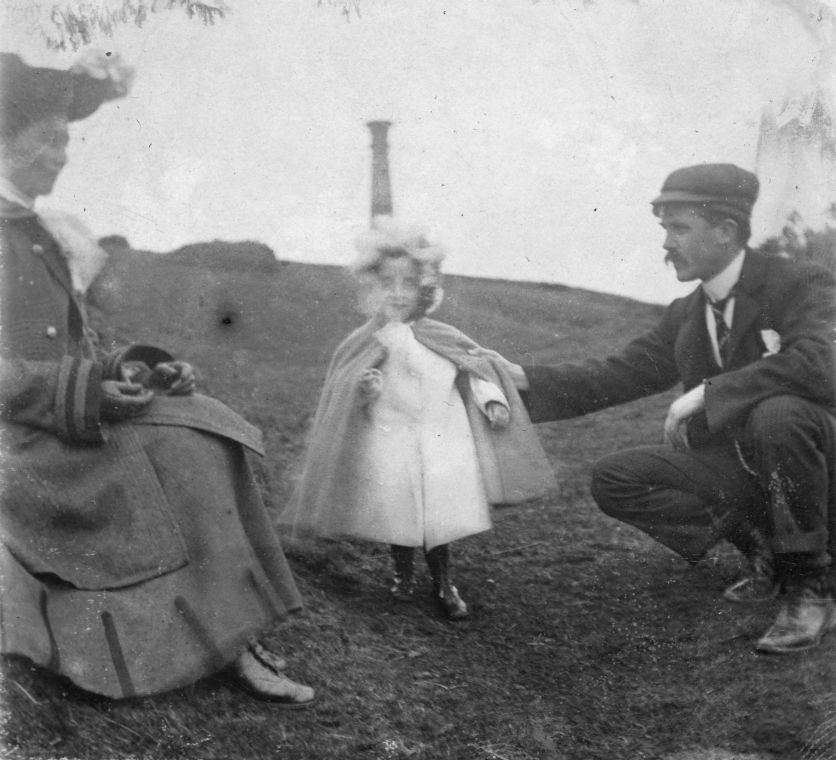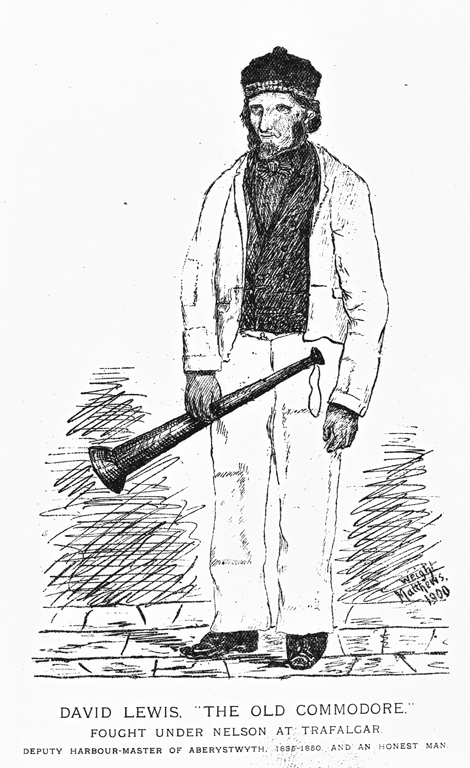Aberystwyth - Overview
The name Aberystwyth (‘Mouth of the Ystwyth’) is a misnomer as this coastal town is situated on the Rheidol estuary. However, the origins of Aberystwyth lie in the Mesolithic settlements near the mouth of the Ystwyth, the Iron Age hillfort of Pen Dinas and the first phase of castle building at Tan-y-Castell.
The present site of the town dates from the foundation of the Edwardian castle and walled borough in 1277. In 1404, Owain Glyndŵr captured the castle and held it for four years. In subsequent centuries, it served as a Royal mint and a warehouse, before it was destroyed on Oliver Cromwell’s orders during the English Civil War.
The town prospered with the growth of herring fishing, and lead and silver mining in the adjacent mountain areas. With the rising popularity of sea side holidays towards the end of the eighteenth century, more and more tourists flocked to this comparatively remote town for the sea-bathing opportunities and picturesque scenery. After a long day of post coach travel on bumpy roads, weary travellers delighted in the scenery of Cardigan Bay. The arrival of the railway in the 1860’s completed the development of Aberystwyth into a seaside resort. Many of the seafront hotels first opened their doors in the nineteenth century, alongside the pier, funicular railway and assembly rooms.
In 1844, King Friedrich August II of Saxony and Carl Carus, his physician, arrived here late one night. After a long day’s journey from Brecon, they found their hotel of choice completely booked. So many tourists had arrived in Aberystwyth that summer that it took hours before they found new accommodation. The next morning, their breakfast was interrupted as a brass band and mariners’ choir gave them a rousing musical welcome.
For those travellers who did not partake of the sea bathing facilities, the area surrounding Aberystwyth was particularly interesting for its connection with picturesque tourism. Uvedale Price, a native of Aberystwyth and one of the founding fathers of the picturesque movement, designed the landscape gardens of the nearby Hafod estate. Most recently, the television programme Y Gwyll / Hinterland, filmed on locations in and around Aberystwyth, attracted a new generation of picturesque tourists to the town.
Accounts of Travel
"Auszüge aus reisebeschreibenden Briefen des vorletzten Grafen von Purgstall", 1796
Gottfried Wenzel von Purgstall (1773 – 1812)
Man kann schon sehr mit der See bekannt seyn, und doch wird man immer ein neues Gemälde vor sich haben, beynah so oft man sie besucht. Gestern Abends war es sehr trübe; es regnete, und der ewige Wind, den man am festen Lande kaum bemerkte, hatte die See sehr in Bewegung gebracht. Das Anprellen der Wagen an die Felsen machte ein Geräusch, so heftig, als der Schuß einer Kanone. So fürchterlich die nun war, so traulich schienen die Wellen von anderen Stellen, mit den Felsenmassen zu spielen. Sie wälzten sich in weißem Schaum an dieselben, und traten schnell wieder zurück, kindlich triumphirend, daß der alte ernste ehrwürdige Fels sie nicht zu haschen und festzuhalten vermag. Andere brachen sich an dem Fels, und gingen nur wenig zurück; diese schienen bestraft für ihr leichtfertiges Spiel, und schienen nur nach langen kleinen Versuchen wieder zu kommen. Man kann Stundenlang alle dem zusehen, ohne zu ermüden.
One can be already very well-acquainted with the sea, but will always encounter a new painting on almost every visit. Yesterday evening, it was very murky; it rained and the incessant wind, which was hardly discernible on land, had whipped the sea into frenzy. The clash of waves against rocks made a sound as loud as cannon fire. Whilst this was, viewed from other locations, a frightful sight, the waves seemed to play with the rocky masses in a friendly way. Decked in white foam, they rolled against the rocks and retreated again quickly in childlike triumph that the old, stern and venerable crag did not manage to grab hold of them. Others broke on the rocks and retreated only a little; they looked as if they had been punished for their careless play and appeared to return only after lengthy timid attempts. It is possible to spend hours observing these scenes without tiring.
"Briefliche Mittheilungen während eines Besuchs der Seebäder an den Nordwestküsten Europa’s, in Holland, Belgien, Frankreich und England", 1839
Carl Mühry (1806 – 1840)
Aberystwyth, mit ungefähr 3000 Einwohnern, ist jetzt das besuchteste Seebad in Wales. Die Lage der Stadt ist reizend, in einem Halbkreise, unmittelbar am Meere hin zieht sich die Hauptstraße, Marine Terrass hin, hart daran ist der Badestrand. Männer und Frauen baden an verschiedenen Plätzen; es sind hier 23 Badekutschen, aber nicht besonders gute; ebenso sind die warmen Schauer- und Dampfbäder sehr mittelmäßig, und, wie sich in England von selbst versteht, ist Alles Eigenthum von Privaten. Der Strand ist schlecht, steinig, der Wellenschlag gut. In der Nähe ist eine eisenhaltige Quelle. Zu den Vergnügungen der Gäste gehören Lesezimmer, Theater, wöchentliche assemblies mit Kartenspiel, Ruderböte, und vor allem Spazierengehen. Auch von hier nahm ich Seewasser mit, dessen Temperatur bei Ostwind war +4 °R [5 °C], die der Luft 6 °R [7,5 °C]. – Es fror des Nachts sehr stark, ich musste mit einem offnen Post-Gig 34 englische Meilen machen, denn die regelmäßigen stage-coaches oder die mail gehen hier im Winter nicht.
With some 3,000 inhabitants, Aberystwyth is now the most visited seaside resort in Wales. The town is pleasantly situated and its main street, Marine Terrace, lies in a semicircle immediately by the sea and is right on the bathing beach. Men and women bathe in separate locations; twenty three mobile bathing cabins are available, but they are not particularly good ones; in the same manner, the warm shower- and steam baths are mediocre and, as is self-evident in England, everything is the hands of privateers. The beach is poor, pebbly; the breaking waves are good. A chalybeate well is situated nearby. Among the diversions for visitors are a reading room, a theatre, weekly assemblies with card games, rowing boats and, above all, going for walks. Here too, I collected a sample of sea water; its temperature was +4 °R [4 °C] and that of the air 6 °R [7.5 °C]. There was a great frost during the night and I had to make a 34-mile journey in the open post gig as the usual stage coaches or the mail are not in operation during the winter.
Itinéraire descriptif et historique de la Grande Bretagne, c. 1850s
Alphonse Esquiros (1812 – 1876)
Les ruines du château se dressent majestueusement au S.O. de la ville et occupent le sommet d’un promontoire élevé, contre lequel, à chaque marées, s’élancent avec une extrême fureur les vagues de l’Océan. Les falaises d’ardoises elle-mêmes ont de la peine à soutenir un pareil choc, et le tout est menacé d’être un jour ou l’autre balayé par la mer. ...
Au nord du château s’étend, à quelques centaines de mètres, une grève d’un niveau assez égal, mais à cette grève succède une longue chaîne de rochers, dans lesquels l’action impétueuse de la mer a creusé des grottes et des cavernes. Au milieu des ruines, il est une promenade qui, par son élévation, domine toute la ligne des côtes formant la baie de Cardigan.
Aberystwith s’élève à peu près au centre de cette baie, et de la ville elle-même on peut suivre de l’œil la côte de Merioneth se prolongeant vers la mer par le long promontoire montagneux de Carnavon,que termine l’île de Bardsey. Cette mer elle-même, qui se développe dans toute son étendue et toute sa majesté, chargée de vaisseaux à voiles, de bateaux à vapeur, de barques de pêche, offre un panorama grandiose et varié.
The castle ruins rise majestically to the south west of the town and occupy the summit of a raised promontory, against which the ocean’s waves rail so furiously with each tide. The slate cliffs themselves can barely withstand such a battering, and the whole is threatened with being swept into the sea one day.
North of the castle a mostly level shore stretches for a few hundred metres, but beyond this lies a long chain of rocks, into which the relentless action of the sea has carved caves and holes. Among these ruins there is a promenade that, thanks to its height, dominates the whole coastline of Cardigan Bay.
Aberystwyth stands more or less at the centre of this bay, and from the town itself the eye can follow the coast of Merionethshire stretching out into the sea as the mountainous promontory of Caernarfonshire with Bardsey Island at its tip. This sea itself, which shows itself in all its scope and majesty, full of sailing boats, steamboats and fishing boats, offers a grand a varied panorama.
Itinéraire descriptif et historique de la Grande Bretagne, c. 1850s
Alphonse Esquiros (1812 – 1876)
On a dit d’Aberystwith qu’elle est une sorte de Brighton dans la principauté de Galles. Les baigneurs s’y rendent en effet en grand nombre pendant l’été : aussi les logements garnis y abondent. Les meilleurs sont situés sur la Terrasse, en face de laquelle se trouvent réunies les voitures pour les baigneurs et les bains chauds d’eau de mer. La grève est célèbre pour les cailloux précieux aue l’on y rencontre, cornélienne, onyx, etc. Les baigneurs et surtout les nageurs feront pourtant bien de prendre leurs précautions. Il est imprudent de s’avancer trop loin dans les eaux, car la marée accourt quelquefois avec une violence soudaine et peut donner lieu à de graves accidents. Le caractère particulier d’Aberystwith est qu’elle réunit tous les avantages et les agréments d’une ville de bains, sans le bruit, l’éclat et les plaisirs fastueux qui troublent trop souvent ces sortes d’endroits. Les marchés et les boutiques sont bien approvisionnés en vue des visiteurs; les hôtels jouissent d’une certaine célébrité à cause de leur aménagement et de leurs prix modérés; les logements garnis sont en rapport avec tous les rangs et toutes les bourses.
It has been said of Aberystwyth that it is a kind of Brighton of Wales. Large number of bathers indeed go there in the summer: and there is plenty of furnished accommodation on offer. The best of it is found on Marine Terrace, opposite all the bathing machines and the heated sea baths. The shore is famous for the precious stones that are to be found there: carnelian, onyx and so forth. Bathers, and especially swimmers, would do well to take precautions. It is ill-advised to venture too far into the water because the tides can sometimes advance with sudden violence, leading to serious accidents. Aberystwyth’s particularity is that it offers all the advantages and attractions of a watering place minus the noise, flashiness and lavish distractions that too often mar such places. The markets and the shops have been well stocked with the visitor in mind; the hotels still have something of a good name thanks to their good design and moderate prices; the furnished accommodation can be rented by all types and suits all budgets.
